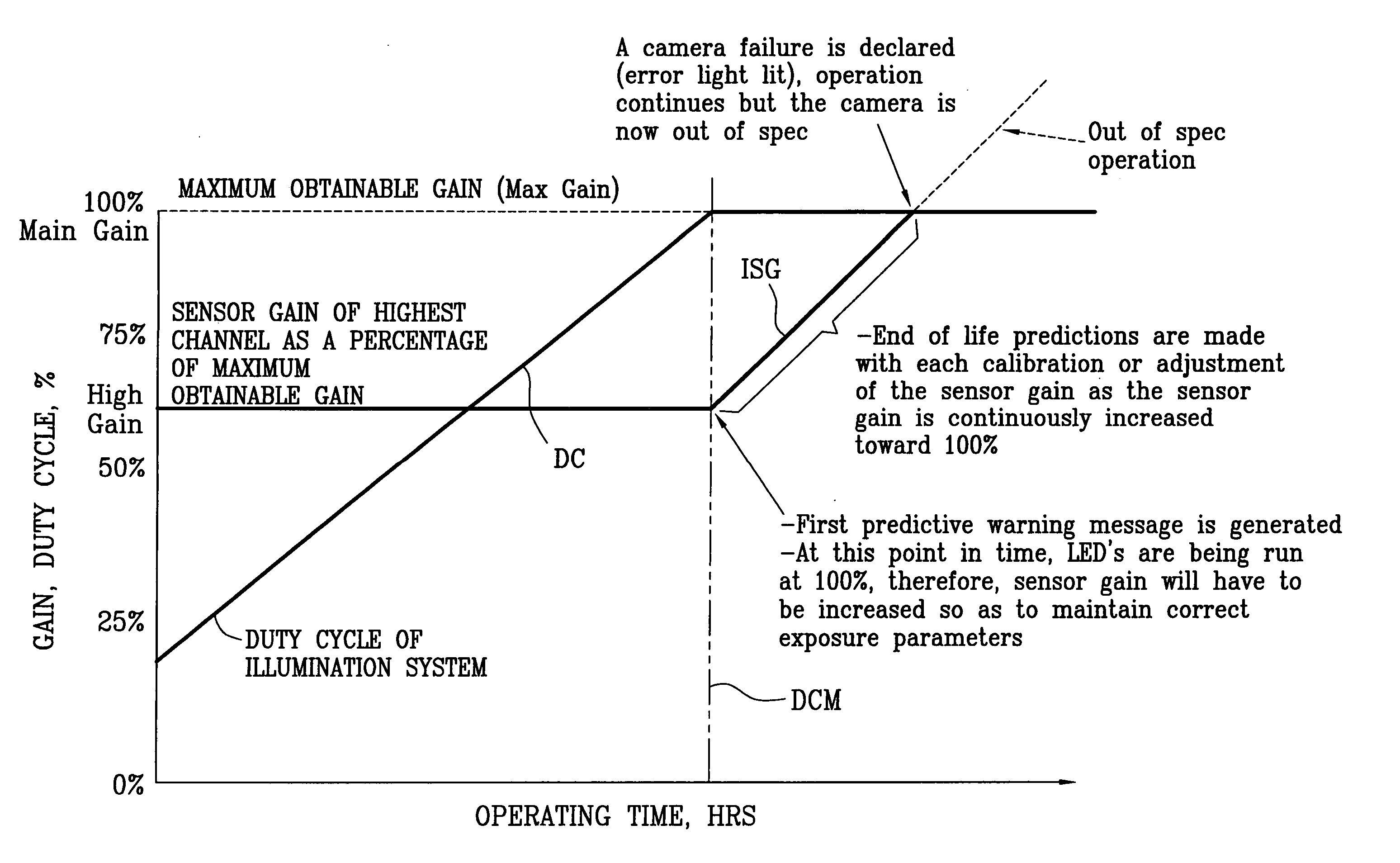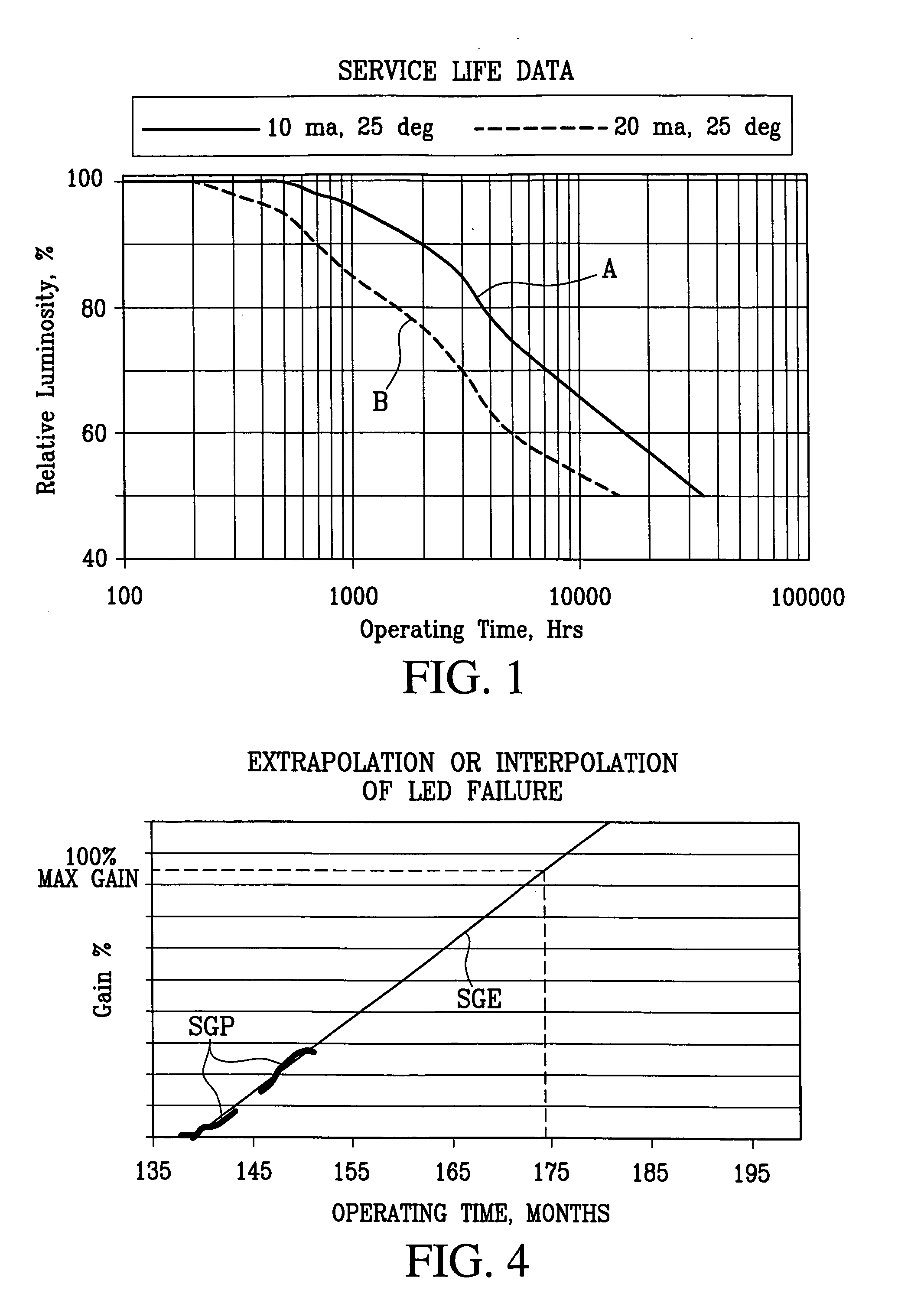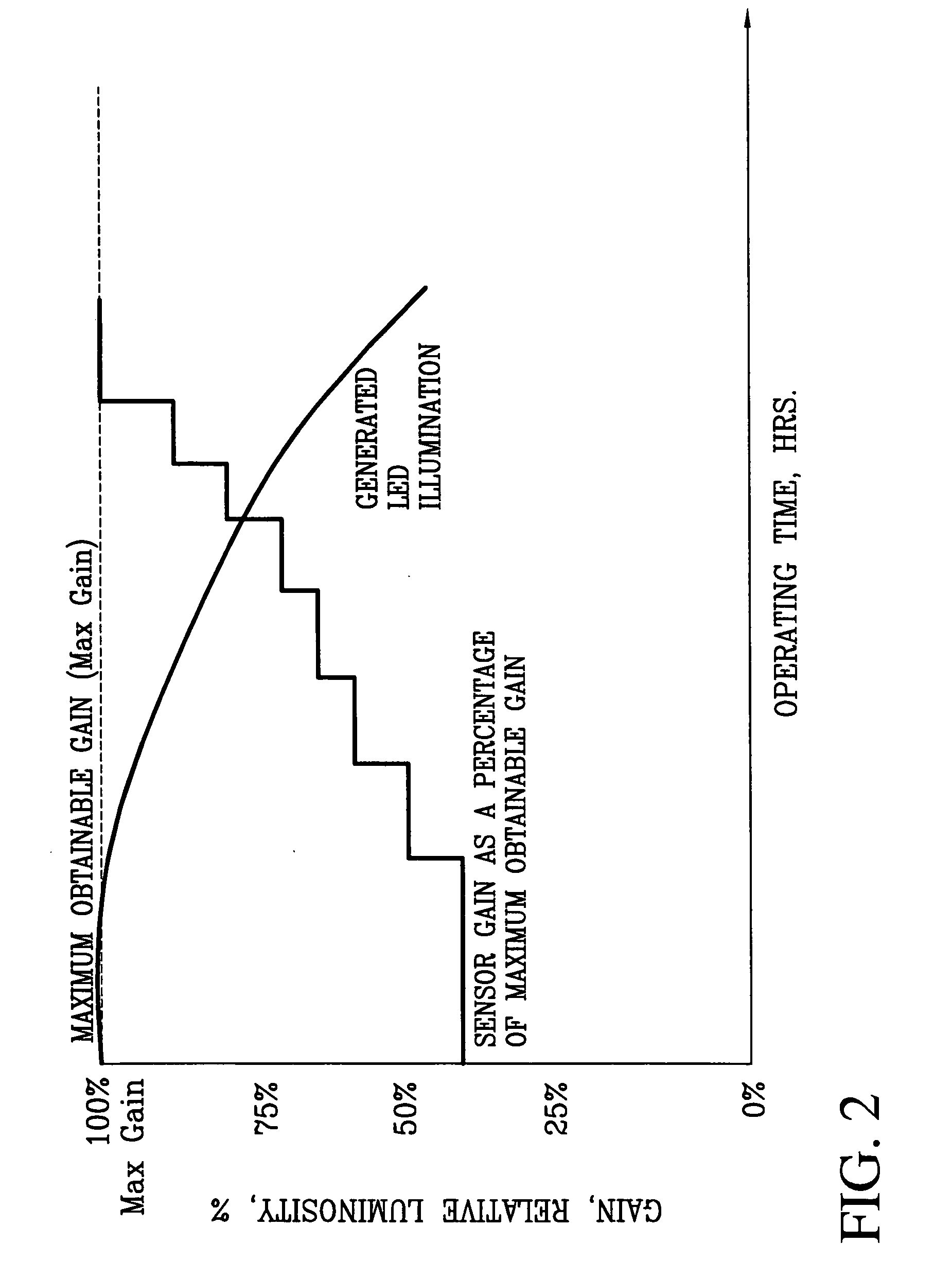Method of LED life extension and end-of-life prediction
a technology of led illumination and life extension, applied in the field of led illumination systems, can solve the problems of white leds that are expensive compared to monochromatic leds, white led illumination systems require a relatively high acquisition and implementation cost, and achieve the effects of prolonging the service life of led illumination sources, and reducing the cost of acquisition and implementation
- Summary
- Abstract
- Description
- Claims
- Application Information
AI Technical Summary
Benefits of technology
Problems solved by technology
Method used
Image
Examples
Embodiment Construction
[0020]Referring now to the drawings, and more particularly to FIG. 3 thereof, there is illustrated a graphical plot of DUTY CYCLE and GAIN parameters, characteristic of, for example, a particular white LED being used as an illumination source within an imaging system, as a function of TIME, wherein such graphical plot is illustrative of the new and improved method or technique, developed in accordance with the principles and teachings of the present invention, for operating imaging system LED illumination sources in such a manner that the LED illumination sources will achieve and exhibit extended or enhanced service lives. More particularly, in lieu of, or contrary to, the conventional PRIOR ART practice of running or operating the LED illumination sources wherein the LED illumination sources are initially normally operated at their maximum output levels or in accordance with a one hundred percent (100%) duty cycle, and in conjunction therewith, wherein the sensor gain control is pr...
PUM
 Login to View More
Login to View More Abstract
Description
Claims
Application Information
 Login to View More
Login to View More - R&D
- Intellectual Property
- Life Sciences
- Materials
- Tech Scout
- Unparalleled Data Quality
- Higher Quality Content
- 60% Fewer Hallucinations
Browse by: Latest US Patents, China's latest patents, Technical Efficacy Thesaurus, Application Domain, Technology Topic, Popular Technical Reports.
© 2025 PatSnap. All rights reserved.Legal|Privacy policy|Modern Slavery Act Transparency Statement|Sitemap|About US| Contact US: help@patsnap.com



